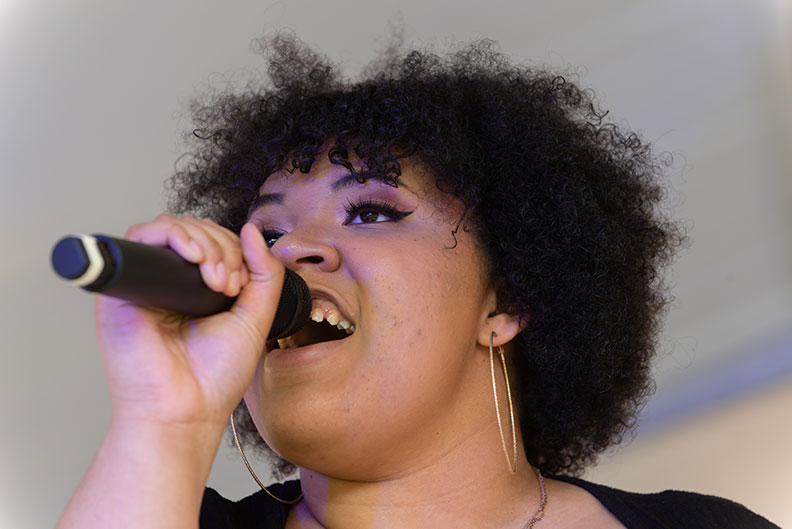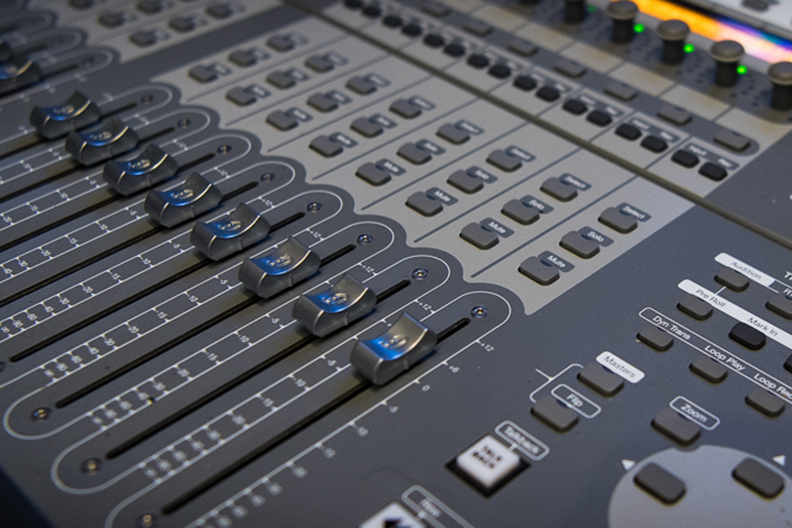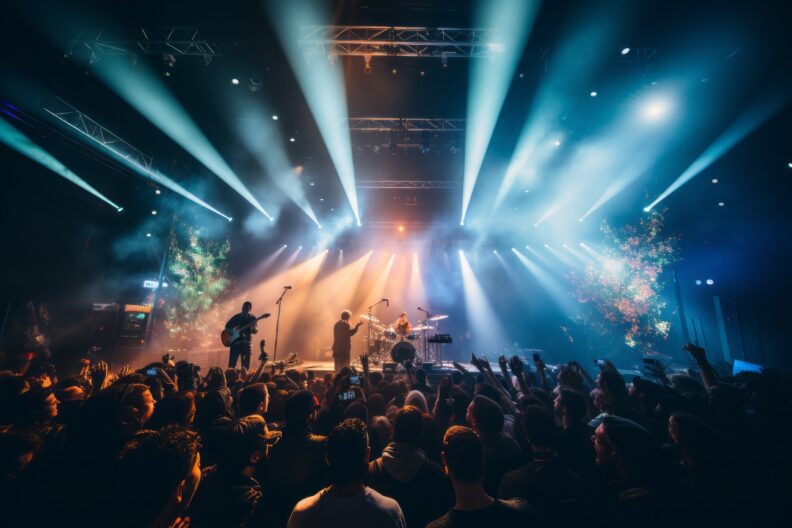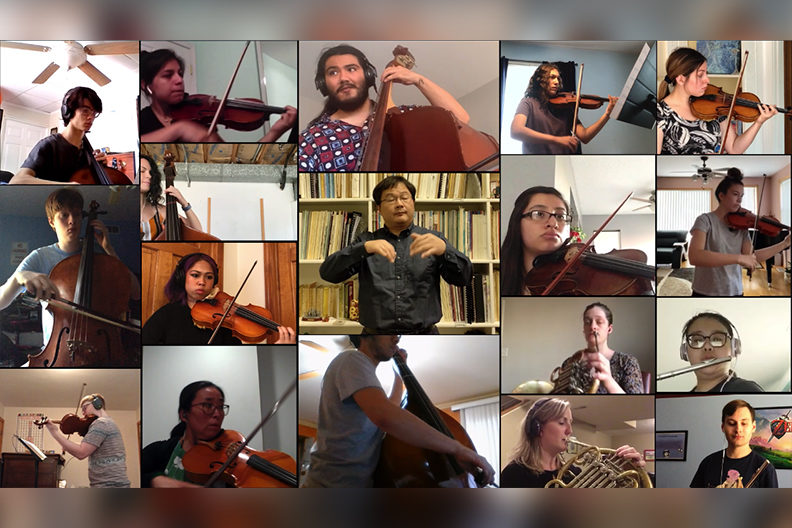Put Your Talent on Display
All students seeking a music major must audition for acceptance into the Department of Music on their major instrument/voice before a panel of music department faculty.
We encourage all students to apply to Elmhurst University before auditioning, for financial aid purposes.
2023-2024 Audition Dates
- Saturday, November 11, 2023
- Monday, January 15, 2024
- Saturday, February 17, 2024
- Friday, March 1, 2024
- Saturday, March 16, 2024
- Saturday, April 6, 2024
- Saturday, April 20, 2024
- Friday, May 17, 2024
If the above-mentioned dates do not work for you, contact Gayle Bisesi to arrange a personal audition appointment.
Form Access Instructions
In order to fill out and submit an audition request form, you will be required to log in and provide authentication. You can do so easily using an existing Google or Microsoft email account by clicking on the corresponding icon below the sign in button. Current students and admitted applicants should log in using Okta (blue “O” icon).
If you have any difficulty accessing the form, please contact the Service Desk at servicedesk@elmhurst.edu or 630-617-3767.

Request to Audition in Person
This process is intended for the following majors:
- B.A. in Music
- B.M. in Jazz Studies
- B.M. in Music Education
- B.M. in Music Production (Only for those auditioning on voice or instrument)
- B.M. in Performance
- B.M. in Theory/Composition
- B.M. or B.S. in Music Business

Music Production Majors: Audition Request Form & Requirements
- The following requirements and request form are specific to Music Production majors auditioning with compositions or arrangements.
- Virtual appointments are not available for this degree program

Music Industry Majors: Interview Request Form & Essay Requirements
- The following requirements and request form are specific to Music Industry majors.

Request to Audition Virtually
- Not applicable for Music Production Majors auditioning with compositions or arrangements
Audition Requirements by Instrument
Trumpet
- All major scales, two octaves
- Prepare any two contrasting etudes from the following: Concone, Snedecor, Small, Arban or Bousquet
OR
- Prepare one of the following solo pieces, or, a piece at this level or above. For questions and inquiries please contact Chris O’Hara.
- Petite Piece Concertante – Balay
- Andante and Allegro – Balay
- Fantasie in mi bemol – Barat
- Andante and Allegro – Ropartz
- Concerto in E flat (1st Movement, exposition only) Haydn or Hummel
- Concerto – Arutunian
- Orchestral Excerpts (optional)
French Horn
- All Major Scales – 2 octaves
- Prepare any two contrasting etudes from the following: Maxime Alphonse, Kopprasch, Andraud 335 selected studies for horn
OR
- Prepare one of the following suggested solo pieces:
- Concertos 1, 2, 3, or 4 – Mozart
- Concerto no. 1 – Richard Strauss
- Nocturno – Franz Strauss
- En Foret – Eugene Bozza
- Adagio and Allegro – Schumann
- Morceau de Concert – Saint-Saens
- Bach Cello Suites
- Orchestral excerpts optional
Trombone
- All major scales, two octaves
- Prepare any two contrasting etudes from the following: Bordogni (Rochut Vol.1), Kopprasch, Blazhevich
OR
- Prepare one of the following suggested solo pieces:
- Morceau Symphonique (Guilmant)
- Andante and Allegra (Barat)
- Concertino (David)
- Or a similar level solo or concerto
Euphonium
- All major scales – 2 octaves
- Prepare any two contrasting etudes from the following: Rochut/Bordogni, Voxman, Arban Characteristic Studies, Tyrell
OR
- Prepare one of the following suggested solo pieces:
- Barat – Andante et Allegro
- Capuzzi – Andante and Rondo
- Guilmant – Morceau Symphonique
- Telemann – Sonata in f minor
Tuba
- All major scales – 2 octaves
- Prepare any two contrasting etudes from the following: Rochut/Bordogni, Blazhevich, Kopprasch, Tyrell
OR
- Prepare one of the following suggested solo pieces:
- Capuzzi – Andante and Rondo
- Haddad – Suite for Tuba
- Lebedev – Concerto in One Movement
- Marcello – Sonata No. 1 in F Major
Prepare two pieces
- An Etude (Study) by Carcassi, Carulli, Sor, Brouwer, Giuliani, or Pick
- A second piece of your choosing by any composer from the Baroque, Romantic, Impressionistic or 20th Century Periods
Note: This could include a Jazz or Electric Guitar piece.
Major Scales
Play all in first position
Sight-Reading
Read a single line piece (to be presented at audition)
Prepare “The Autumn Leaves” (G minor) or “There Is No Greater Love” (Bb)
- Play the head
- Solo one chorus
- Accompanist to solo over the two A sections
- Play the melody on the bridge to the end
Sight-Reading
As selected by the committee.
Prepare “Tenor Madness” (Bb)
- Play the head
- Walk for a piano solo
- Play a Bass solo
- Play the head out
Prepare “Autumn Leaves” as a Bossa (comping only)
Sight-Reading
Sight-read a big band chart.
Saxophone, Trumpet, Trombone
- Prepare “The Autumn Leaves” (G minor) or “There Is No Greater Love” (Bb)
- Play the head
- Solo one chorus
- Accompanist to solo over the two A sections
- Play the melody on the bridge to the end
- Sight-reading as selected by the committee
Guitar and Piano
- Prepare “The Autumn Leaves” (G minor) or “There Is No Greater Love” (Bb)
- Play the head
- Solo one chorus
- Accompanist to solo over the two A sections
- Play the melody on the bridge to the end
- Sight-reading as selected by the committee
Drum Set
- Play swing time for four bars, solo for four bars (trade 4’s) at quarter note = 120
- Play the same at half note equals 120 but trade 8’s
- Play as many of these styles as possible: Swing with brushes, ballad with brushes, 3/4 swing, Bossa Nova, Samba, Afro Cuban 6/8, Mambo, or Songo, Funk, Rock
- Sight-read a big band chart
Bass
- Prepare Tenor Madness (Bb)
- Play the head
- Walk for a piano solo
- Play a Bass solo
- Play the head out
- Prepare “Autumn Leaves” as a Bossa (comping only)
- Sight-read a big band chart
Vocalists
- Prepare “The Autumn Leaves” or “There Is No Greater Love” in the appropriate key
- Sing the head
- Scat one chorus
- Accompanist to solo over the two A sections
- Sing the melody on the bridge to the end
- Sight-reading as selected by the committee
Be able to demonstrate as much facility on as many percussion instruments as reasonably possible—Snare drum solo, Mallet solo, Timpani solo and Drumset.
Please Note: If you are not well versed on a particular instrument, please prepare a simple melody to show that you are at least working on it.
Repertoire suggestions
(Feel free to use repertoire outside of this list)
Snare drum
Selections from Anthony Cirone, Morris Goldenberg, John Pratt, Wilcoxen
Mallets
Selections from Morris Goldenberg, George Hamilton Green, Mitchell Peters
Timpani
Selections from Vic Firth, Saul Goodman
Drumset
Be able to play as many of these styles as possible: Swing (sticks and brushes), jazz ballad with brushes, 3/4 swing, swing trading 4’s with yourself, bossa nova, samba, songo, mambo, afro cuban 6/8, funk, rock.
Sight-Reading
- Be able to sight-read a few bars of a drum set chart
- You will be asked to play a sight-reading example or two on snare drum
Repertoire Selection
- Prepare two works of contrasting styles chosen from the Baroque, Classical, Romantic, Impressionist/20th century periods or any suitable jazz selection of your choice. For example: first movement of a sonata by Mozart and a piece by Ravel.
- Memorization is strongly recommended but not required
- There are no time requirements on any piece, but the audition itself will not exceed 10 minutes
Scales
Prepare one major and one harmonic minor scale of your choice.
Sight-Reading
Sight-read an excerpt of piano music that will be presented at the audition.
Violin
- One major and one melodic minor three-octave scale (your choice of keys)
- One etude or caprice (e.g. Dancla, Mazas, Paganini, Sitt, Wohlfahrt, etc.)
- One movement of a Bach Sonata or Partita
- A first or third movement from a major concerto
- An alternative styles work (if you’re interested in studying this genre)
Viola
- One major and one melodic minor three-octave scale (your choice of keys)
- One etude (e.g. Dont, Fuchs, Hoffmeister, Sitt, etc.)
- One movement of a Bach Solo Suite
- A first or third movement from a major concerto
- An alternative styles work (if you’re interested in studying this genre)
Cello
- One major and one melodic minor three-octave scale (your choice of keys)
- One etude(e.g. Duport, Grutzmacher, Piatti, Popper, etc.)
- One movement from a Bach Cello Suite
- A first or third movement from a major concerto
- An alternative styles work (if you’re interested in studying this genre)
Double Bass
- One major and one melodic minor two-octave scale (your choice of keys)
- One etude or exercise from a standard method book or etude book
- Two solo compositions for bass in contrasting styles
- An alternative styles work (if you’re interested in studying this genre)
Harp
- One etude that demonstrates technical fundamentals on harp
- One solo composition in a style contrasting the above etude
- An orchestral excerpt or a solo cadenza
- An alternative styles work (if you’re interested in studying this genre)
Prepare two pieces of contrasting styles
- All pieces must be memorized
- Prepare two pieces
- One piece must be classical and preferably in a foreign language (English is acceptable as well)
- Second piece can be one of three styles: musical theater, jazz or classical
Sight-Reading
- There will be a short sight-reading excerpt
Flute
- All major scales, two octaves
- Chromatic scale, low C to high A (octave above the staff)
- Two contrasting solos, movements or etudes different periods (i.e. Baroque, Romantic, Contemporary)
Oboe
- All major scales, full range recommended
- Chromatic scale, low Bb to high E (above the staff)
- Two contrasting solos, movements or etudes
Clarinet
- All major scales, two octaves
- Chromatic scale, low E to high F (above the staff)
- Two contrasting solos, movements or etudes
Bassoon
- All major scales, two octaves where possible
- Chromatic scale, Bb (below bass clef staff) to high Bb (3rd line treble clef)
- Two contrasting solos, movements or etudes
Saxophone
- All major scales, full range recommended
- Chromatic scale, low Bb to high F (above the staff)
- Two contrasting solos, movements or etudes
Interview
Each student will participate in a brief interview with our director of music admissions and various department faculty to discuss their goals, aspirations, what they will bring to Elmhurst University and answers to any questions they may have.
- Accompanists are optional for instrumentalists
- Elmhurst University faculty pianist (if requested in advance)
- Your own pianist
- CD Track without your instrument present
- Microphones will not be used
On the day of your audition, please bring four copies of each piece of music you will be playing. These will be distributed to the faculty panel.
Your overall presentation is important.
- Business casual attire is recommended
- Jeans, tennis shoes, shorts and T-shirts are not recommended
Music Theory Assessment
After your audition, you will be asked to complete a brief Music Theory Assessment. This is just an assessment. It has nothing to do with your acceptance into the music program.
Scholarships
You will be considered for a scholarship following your audition. The music department provides scholarships to students who demonstrate excellence in performance. Scholarships are determined based on the entrance audition; additional scholarships are awarded to continuing students, and academic scholarships are available through the University’s Office of Admission.
Please refer to the Office of Admission for more information about Elmhurst’s overall admission policies and processes.
Summer Auditions
Summer auditions are primarily for acceptance into the department. Students who audition in the summer (June) for the upcoming school year may not be considered for a music scholarship. For example, someone auditions in June and plans on attending Elmhurst in September.
Summer auditions do not preclude a student from consideration for academic or other scholarships offered by Elmhurst nor does it diminish a student’s eligibility for financial aid from University-sponsored sources.